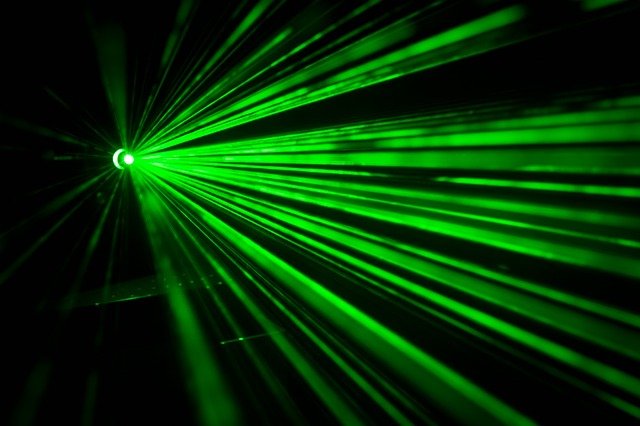How does a laser work
One must have seen and if not seen then must have heard the term laser. But if you have seen the laser light emitting from a source, then there should be a natural question how does a laser work? Therefore let us discuss how the laser works?
As already discussed in my earlier articles, the full form of laser is “Light amplification by stimulated emission of radiation”. Therefore it means that laser light is amplified through a process called stimulated emission. Thus it means that stimulated emission is that process through which laser can be achieved. That is the reason the stimulated emission is known as the principle of laser.
Concepts to learn how does a laser work:
1. Stimulated absorption: In this stimulated means “with the help of external source” and absorption means “to gain”. Thus in this process the atoms in the ground state absorb energy and get excited after absorption of energy. The stimulated absorption process with proper figure is already discussed in detail.
2. Spontaneous emission: Spontaneous means “by its own” and emission means “to release”. The excited atom will de-excite naturally after approximately 10-8 seconds. Whenever the atom de-excited, it released the energy (gained during stimulated absorption) in the form of photons. The photons emitted will be in a random direction. After how much time and what is the spontaneous emission, then read the article of spontaneous emission process with the proper figure.
3. Stimulated emission: stimulated means “with the help of external source” and emission means “to release”. The excited atom will de-excite with the help of an external source after some time. Whenever the atom de-excited, it released the energy (gained during stimulated absorption) in the form of photons. But here the photons will be released with the help of an external source and that external source is photon emitted during spontaneous emission. This photon and the emitted photon will be in the same direction. This process will continue and the population of photons is increased with the help of an optical resonator system. If you want to know why the Stimulated emission is the principle of laser, then read the article of stimulated emission process with proper figure.

4. Types of laser:
a) Ruby laser (The construction of ruby laser and working of ruby laser)
b) Helium-neon laser (The construction of helium-neon laser and working of helium-neon laser)
c) carbon-dioxide laser (The construction of carbon dioxide laser and working of carbon dioxide laser)
d) Semiconductor laser (The construction of semiconductor laser and working of semiconductor laser)
e) Dye laser
There are other types of lasers also.
5. Three main components of laser device are (construction of laser):
a) Active medium:
For example in ruby laser, the active medium is aluminum oxide doped with .05 percent of chromium ions.
In helium-neon laser it is the combination of helium and neon in the ratio of 10 :1.
b) Pumping source (How pumping is done):
For example in ruby laser, the pumping source is optical pumping that is helical xenon flash tube.
In helium-neon laser, electrical pumping that is electric discharge is used for stimulated absorption.
c) Optical resonator system:
In most of the systems, it consists of a system of two mirrors. One mirror is fully reflective and the other is partially reflective.
5. The examples of how does a laser work:
How can a laser work be better understood with the help of construction of ruby laser and working of ruby laser with proper figures?
For revision one can also read the construction of helium-neon laser and working of helium-neon laser or construction of carbon dioxide laser and working of carbon dioxide laser with proper figures.
I hope after reading the articles, you will know to be able to understand and explain how does a laser work.
In case of any doubt, please post in the comment section.
why nd yag laser come…?????
please explain your question.
How does same phase of photons is achieved so that LASER become a coherent source?